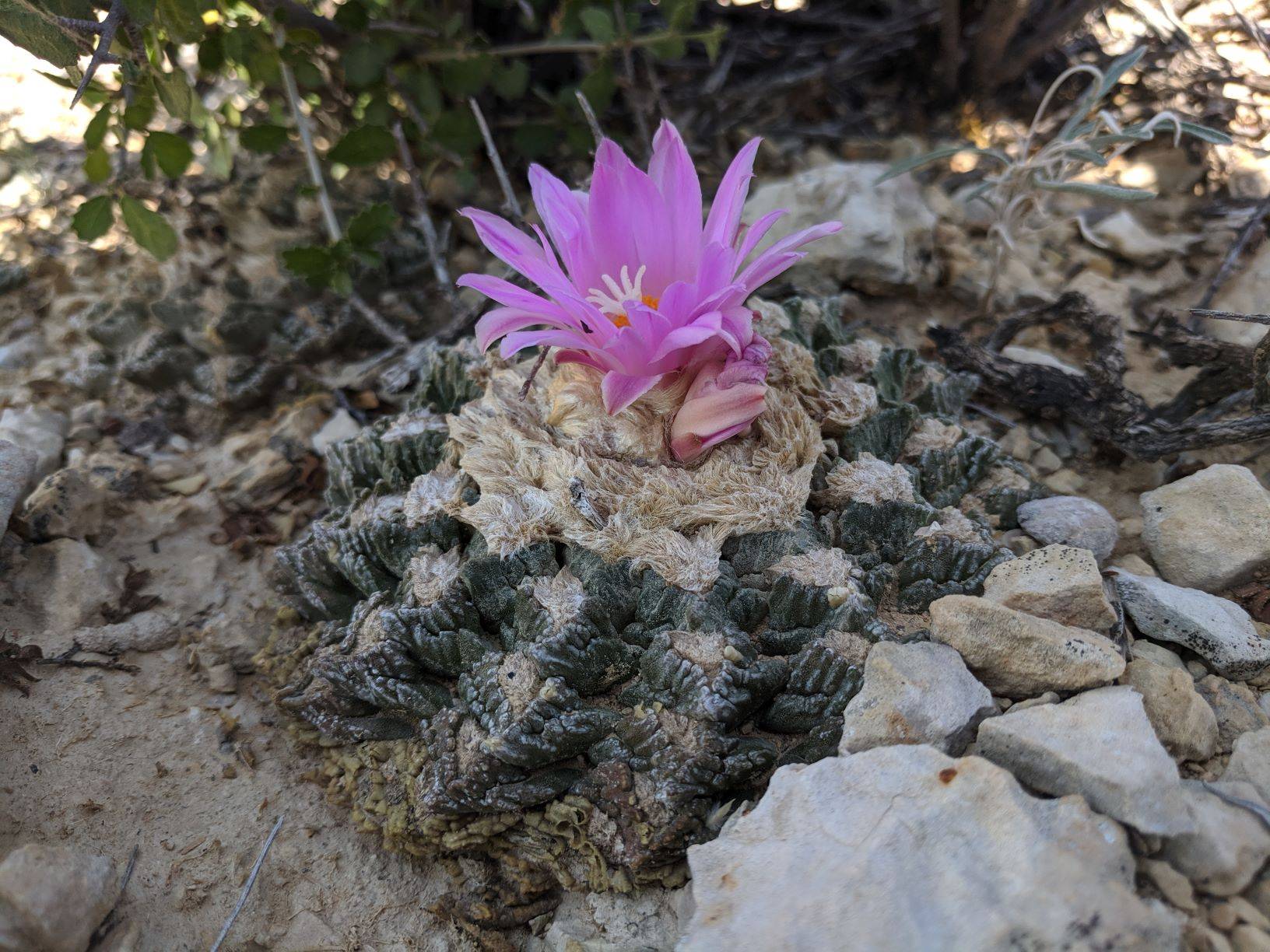Ariocarpus
|
Family: Cactaceae |
Plants erect, unbranched [or branched], deep-seated in the substrate [or somewhat subterranean for whole seasons]. Roots taproots. Stem unsegmented, gray-green (yellow-green or purplish with age or stress), above-ground portion flat, concave, or weakly hemispheric, usually flush with soil surface and cryptic, strongly tuberculate, 0-2(-10) × [3-]5-10(-15) cm, hard, rigid, tough skinned [thin skinned in A. agavoides of Mexico]; tubercles arranged in rosettes or mosaics, ± triangular, 8-20[-60] × [3-]11-25 mm, hard, exposed faces of tubercles strongly differentiated from sides [except in some Mexican species], prominently fissured [wrinkled, roughened, or nearly smooth]; areoles elongate [circular and axillary, circular and subapical, or 2-parted], forming a wide woolly groove on each tubercle; areolar glands absent; cortex and pith not mucilaginous, 'mucilage' restricted to elongate cavities. Spines absent [sporadic and rudimentary in some Mexican taxa]. Flowers diurnal, borne in axils of tubercles near stem apex, broadly funnelform to almost salverform, 1.5-5 × 1.5-5 cm; outer tepals brownish or greenish with pink tinge, 12-35 × 5-9 mm, margins entire; inner tepals pink or magenta [white or yellow], 13-34 × 4-10 mm, margins entire; ovary smooth (scales, hairs, and spines absent); stigma lobes 5-10, white, 1.2-5 mm. Fruits indehiscent (very rarely explosively dehiscent), white or cream to pale greenish [reddish], spheric to clavate or cylindric, proximally or almost completely buried in copious wool of stem apex, 10-25 × 5-10 mm, initially fleshy, drying and collapsing a few days after ripening, scales and spines absent; pulp white to pale greenish; floral remnant apparently persistent. Seeds black, spheric to obovoid, 1.2-1.6(-2.5) mm, minutely tuberculate, shiny; testa cells strongly convex (conspicuous with lens). x = 11. Ariocarpus species mostly grow in broken rock substrate and closely mimic it. Some Mexican species display additional adaptations, e.g., A. kotschoubeyanus (K. Schumann) K. Schumann withdraws into seasonally inundated, fine lacustrine soil and can be completely buried between growing seasons.
|

